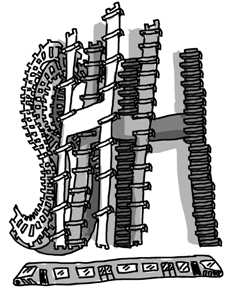
Shanghai education authority announced Thursday that a total of 78,800 local senior high school students will sit the gaokao (national college entrance examinations) from June 7 to 8. Among them, 28,800 will have the chance to get a place at universities and colleges nationwide and spend four years working towards their bachelor's degrees; while 7,700 will be admitted by local vocational schools and spend two to three years working towards a diploma or certificate.
Given the background that 2013 is a "bad" or even "the worst" year as far as the employment situation is concerned, a total of 7 million university graduates nationwide are struggling to find a job. Senior high school students have no other better choices but still try to secure a university place, hoping that the employment situation will be better in four years, or in the belief that they can stand out from the crowd if they try their best. However, since this weekly column has covered the issue previously and the situation is much the same nationwide, I'd like to shift focus to an event which is more specific to Shanghai.
This Tuesday, Shanghai celebrated the 20th anniversary of the successful trial operation of part of metro Line 1. On May 28, 1993, a 6.6-kilometer-long subway linking Xujiahui to Jinjiang Amusement Park began trial operation.
There are currently 287 metro stations linked by the 439-kilometer-long subway network in the city. Shanghai was China's third city to get a metro system, after Beijing and Tianjin.
Shanghai has 23 million residents, according to the latest census. About 7 million riders take the subway every day. We can imagine what an important role the metro system has played in the city.
The metro management company invited people who attended the opening ceremony 20 years ago to attend the anniversary Tuesday, and ride the same No.101 train on the same route. Among them were people who had represented their primary schools at the opening ceremony, and who have now grown into young adults with different careers. Their growth and development reflect that of the metro system.
The metro operator told media that at the age of 20, Shanghai metro system has experienced and learned a lot, and will keep making progress and target great achievements.
In the past 20 years, we have found that positive news prevails over negative stories. News of the launch of a new line, the expansion of an existing one and the unveiling of blueprints for the network's development are always exciting content in local and national media. Many real estate companies have taken advantage of the metro development to raise the price of houses nearby.
At the same time, we have heard problems of mechanical failure, speed and passenger limits, and all kinds of complaints and disputes between riders and the operating company. The worst accident was the collision of two metro Line 10 trains at about 2:30 pm on September 27, 2011. Luckily, no fatalities were reported, although hundreds of riders suffered injury.
Metro management responded quickly towards the accident and a news conference was held in the evening. Its official Sina Weibo account expressed sincere apologies to the public, saying the day was the darkest in its history.
We also hope that remains the darkest day and that no similar or even worse accident occurs in future.
The city's development and urbanization always exceed the expectations of both experts and public.
The saying "prefer a bed in Puxi to a room in Pudong" is very deep-rooted and popular among local people, and illustrates the view of the relative desirability of each as a place to live. But better transport links are challenging this view. As early as 1971, Dapu Road Tunnel was built to connect Puxi with Pudong. Previously, ferry boats were the only means of transport between the two areas.
In 1991, Nanpu Bridge became the first bridge to link Pudong with Puxi.
Now Shanghai has four bridges and 12 tunnels linking the areas, and Pudong New Area has contributed almost 30 percent of the GDP index for the whole city. There is no need to discuss the value differences of either a bed or a room in both areas.
When Shanghai's 47.7-kilometer-long Inner Ring Road was put into use in 1994, a private car was a luxury symbol for local people, and even taking a taxi was still regarded as being part of a top-end lifestyle. Land transport authorities did not envisage that there would someday be traffic congestion downtown. But now it's common to see even major roads, including Yan'an Elevated Road and the ring roads, turn into giant parking lots during rush hour.
The same is the case with the subway system.
The fast-changing factors impose pressure on administrators of all levels. There is still a lot local authorities need to learn from their counterparts in developed countries. The earlier and more thoroughly that they do so, the fewer economic and other losses we will suffer. At the same time, here we are in Shanghai and China, so never forget the unique local characteristics.
When my cousins from a village in Zhejiang Province came to visit me in Shanghai, I would always take them to experience a subway ride, as the metro system represents Shanghai and its development, something that I'm proud of as a new-generation Shanghainese.
The author is the managing editor of Global Times Metro Shanghai. fengyu@globaltimes.com.cn

